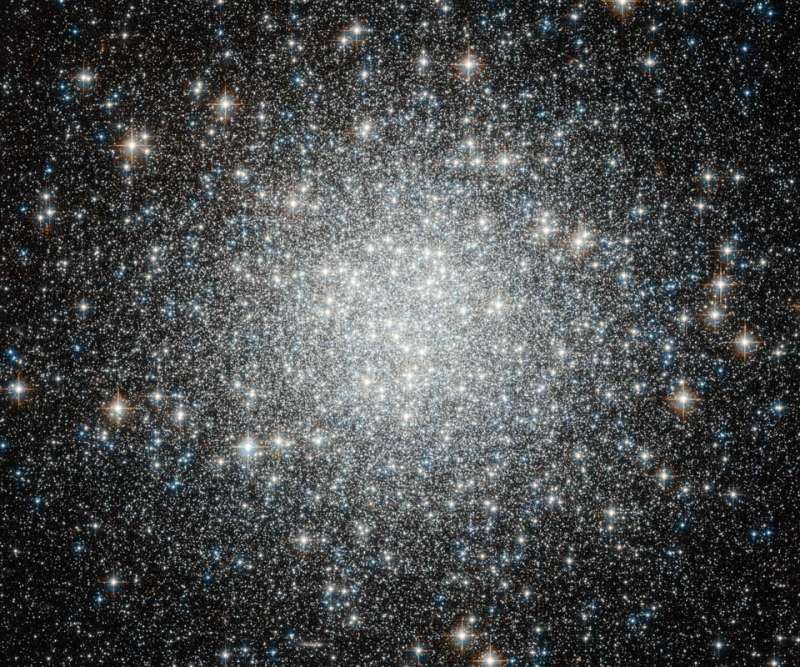Credit & Copyright: ESA/Hubble,
NASA
Explanation:
If our Sun were part of M53, the
night sky would glow like a jewel box of bright stars.
M53, also known as NGC 5024, is one of about 250
globular clusters that survive in our Galaxy.
Most of the stars in
M53
are older and redder than our Sun, but some enigmatic stars appear to be bluer and
younger.
These young
stars might contradict the hypothesis that all the stars in
M53 formed at nearly the
same time.
These unusual stars are known as
blue stragglers and are unusually common in M53.
After much debate, blue stragglers are now thought to be stars rejuvenated by fresh
matter falling in from a binary star companion.
By analyzing pictures of globular clusters like the
above image taken by the Hubble Space Telescope, astronomers
use the abundance of stars like
blue stragglers to help
determine the age of the globular cluster and hence a limit on the age of the universe.
M53, visible with a binoculars towards the
constellation of Bernice's Hair (Coma Berenices),
contains over 250,000 stars and is one of the furthest
globulars from the center of our Galaxy.
1999 2000 2001 2002 2003 2004 2005 2006 2007 2008 2009 2010 2011 2012 2013 2014 2015 2016 2017 2018 2019 2020 2021 2022 2023 2024 2025 |
Январь Февраль Март Апрель Май Июнь Июль Август Сентябрь Октябрь Ноябрь Декабрь |
NASA Web Site Statements, Warnings, and Disclaimers
NASA Official: Jay Norris. Specific rights apply.
A service of: LHEA at NASA / GSFC
& Michigan Tech. U.
|
Публикации с ключевыми словами:
globular cluster - stars - Шаровое скопление - голубые бродяги
Публикации со словами: globular cluster - stars - Шаровое скопление - голубые бродяги | |
См. также:
Все публикации на ту же тему >> | |
Мнения читателей [3]
